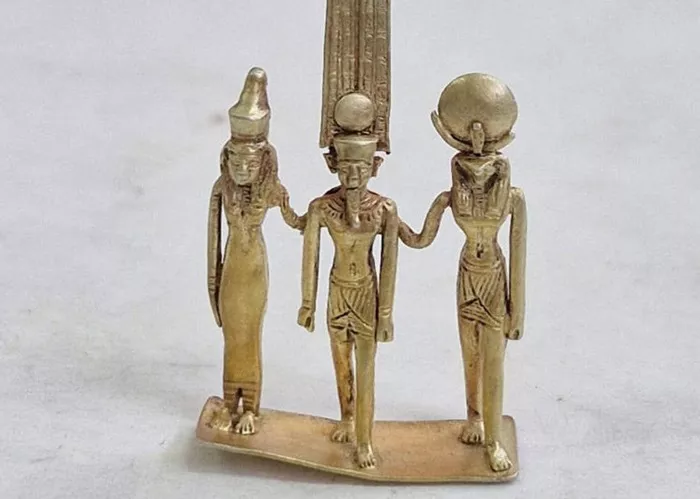Archaeologists from Egypt and France have discovered a collection of well-preserved ancient jewelry at the Karnak Temple complex near Luxor, Egypt.
The items found include golden rings, beads, ornaments, and a small statue showing three ancient Egyptian gods. These artifacts date back to the 26th Dynasty of ancient Egypt, which lasted from 664 to 525 B.C.E., according to the Egyptian Ministry of Tourism and Antiquities.
Mohamed Ismail Khaled, secretary-general of Egypt’s Supreme Council of Antiquities, said the discovery is very important. He explained that it helps us better understand the historical development of the Karnak Temple during the first millennium B.C.E.
The jewelry was found inside a broken pottery container, which helped keep it in excellent condition, Khaled added.
Among the items, the most interesting is a small golden statue showing three gods: Amun, Khonsu, and Mut. This statue might have been worn as an amulet. These three gods formed a local triad worshiped in ancient Thebes, now modern Luxor, representing a divine family.
Shelby Justl, an Egyptologist from the University of Pennsylvania who was not involved in the dig, told Live Science that the golden triad is finely made. She said it fits well at Karnak Temple because this temple was dedicated to the worship of these gods.
Amun was the chief god in Thebes. Mut was his wife and a divine mother. Khonsu, their son, was the moon god and is often shown as a young figure. There is a temple dedicated to Khonsu in the southwest part of the Karnak complex.
The discovery also included eye-shaped amulets called wedjat. These amulets were believed to protect the wearer and give the power of regeneration, Justl explained.
After cleaning and documenting, the jewelry will be displayed at the Luxor Museum. However, many questions remain, such as why the jewelry was buried in this place.
Jack Ogden, a jewelry historian not connected to the excavation, told Live Science that the pieces seem quite fragile. He suggested they might have been made for burial rituals rather than everyday use.
However, this part of the temple is linked to the living, not to burials, Justl said. Because of this, archaeologists have suggested other explanations.
Jérémie Hourdin, the leader of the French excavation team, said the objects might be related to large mud-brick buildings used as storage or workshops for the temple, according to Arkeonews.
Another possibility is that the golden items were offerings to the gods as part of religious ceremonies. A third theory suggests a more troubling reason.
Ogden proposed that the treasure could be the hidden loot of an ancient tomb robber who never came back to collect it. He said it would be useful to study the breaks and damages on the objects to see if they were caused by rough removal from a mummy.
Related topics:
- Day’s Jewelers to Open Flagship Store in Salem, New Hampshire
- Tiffany & Co. Opens Largest European Flagship in Milan
- Tanishq Launches New Showroom in Mangalore


